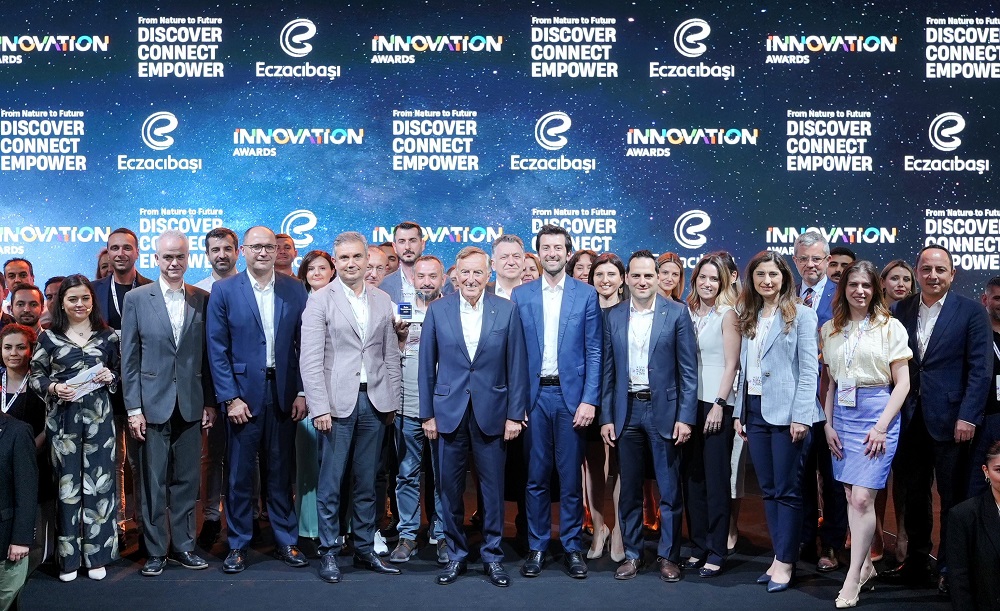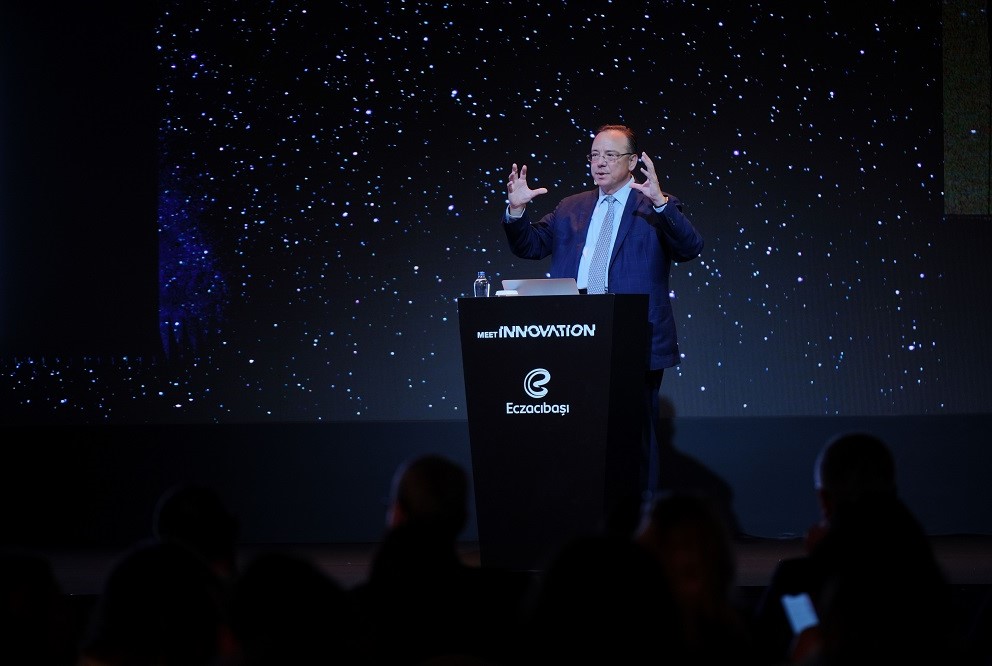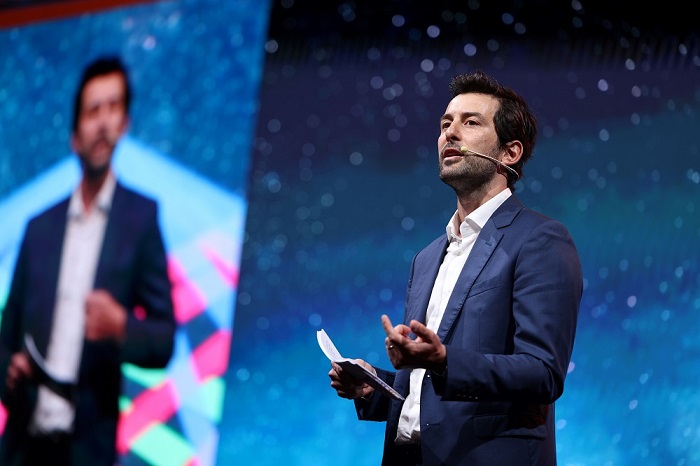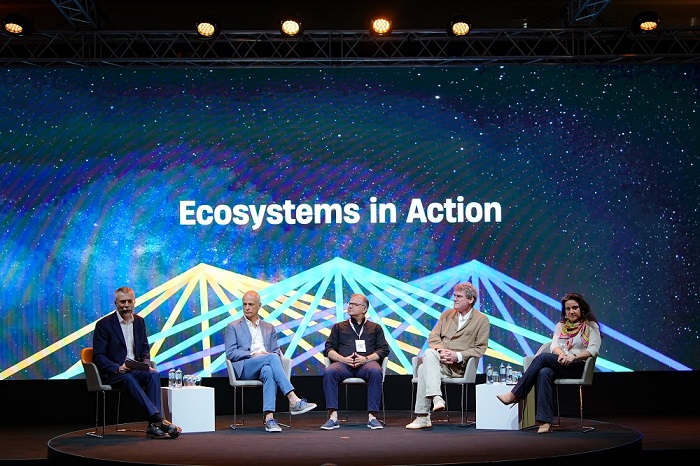At this year's Eczacıbaşı Meet Innovation, organized by the Eczacıbaşı Group since 1999 to foster innovative thinking from conception to concrete outcomes, we explored the concept of “connectivity” - the common thread linking dynamics in science, ecosystems, and the business world. The 2024 Eczacıbaşı Meet Innovation, held in strategic partnership with Harvard Business Review, centered on the theme “From Nature to Future: Explore. Connect. Empower.”
During the event, we delved into crucial questions such as: How can we uncover connections within our networks? How can we apply the collaborative approach inherent in nature to our work methods, relationships, and innovation strategies? How can we harness the creative potential in connections to drive collective transformation?
Now, let's broaden our perspective on the concept of connectivity.
“We’re living in a transitional era where the old has been dismantled, but the new has yet to be established. This transition is the source of our current discomfort. The central question we must answer, both for ourselves and our society, is: How can we construct a better and more beautiful world?” asserts Prof. Dr. Türker Kılıç, Neurosurgeon, Founding Dean of Bahçeşehir University Medical School, and Founder of the Turkish Brain Foundation. He emphasizes that artificial intelligence and neuroscience are engaged in a crucial endeavor on this path, stating, “Artificial intelligence and neuroscience contribute to humanity's fight against ‘uncertainty’ through a partnership that progresses from simple to complex in AI, and from complex to simple in neuroscience. Humanity's struggle with uncertainty has evolved through eight distinct stages. The latest stage involves increased connectivity, particularly evident during the pandemic, and its relationship with the whole. The part-whole relationship and the human brain, which we attempt to model, provide us with insights on the path to creating a better world.”
Kılıç notes that the traditional scientific methodology of examining a whole was based on “part analysis,” an approach he now considers outdated. He emphasizes that the true magic lies in the connections between the parts: “Historically, when analyzing a whole, we would break it down into parts, study each building block individually, and then apply that information to understand the whole. However, we now realize this approach is flawed. The key factor ensuring the stability of the whole is not the individual parts, but the relationships between them. When we examine any puzzle, the crucial information that reveals its nature is not found in the individual pieces, but in the network structure they collectively form.”
“The Human Brain Far Surpasses a Computer”
Türker Kılıç explains that, until recently, scientists had proceeded with the assumption that the human brain works like a computer. However, they have now realized that the human brain actually far surpasses computers in capability. Kılıç elaborates on this revelation: “We initially accepted that the human brain works like a computer. We soon realized that the human brain functions much differently. While computer systems operate on a binary 0 or 1 principle, each neuron in the human brain chooses from infinite options between 0 and 1 every time it makes a decision. Consider this: there are 100 billion neurons, and in each decision-making process, they select from infinite options between 0 and 1. What we needed was not a computer to model this, but a new mathematical approach. We are now in the process of creating a more sophisticated model to address questions such as ‘What is life?’ and ‘How does the brain work?’ This has the potential to give birth to a new culture. The key concept of this new culture is ‘connectivity.’ We can confidently say that this pivotal idea and its implications have the potential to transform our understanding of life itself. We are witnessing a transition, a transformation from a culture of ownership to a culture of coexistence, from the science of individual parts to the science of connectivity.”
Speaking at the event, Nejat Emre Eczacıbaşı, Eczacıbaşı Group Innovation and Entrepreneurship Coordinator and Board Member, focused on change and how connectivity can help us understand and respond to it: “Change becomes possible when we recognize our part in a larger whole and understand the importance of our connections within it. In the Innovation and Entrepreneurship Office, we've consistently aimed to base the evolution of our transformational focus on an ecosystem perspective rather than a sector-specific one. Our strategies are determined by needs, not business lines. We strive to foster a working culture and community that breaks down organizational and departmental barriers, develops expertise in vertical competencies and areas of interest, and implements cross-sectoral production methods.
Our innovation strategy studies have identified areas of synergy between organizations using an ecosystem approach. We've worked to increase both the number and depth of our connections within and outside the Group. We launched our intrapreneurship program, EKİG, which has led to many creative solutions driven by inter-organizational cooperation. Our corporate venture capital fund, Eczacıbaşı Momentum, has allowed us to connect with startups worldwide and engage in their business processes. The connections we've established within the entrepreneurship ecosystem have enabled us to participate in systems that create shared value. Essentially, we continue to pursue innovation while maintaining our commitment to self-transformation.”
Nejat Emre Eczacıbaşı stated that the Group's future vision is built on diversity and the synergy arising from the connections between these differences. Eczacıbaşı outlined theirroup’s main goals for the future: “Our vision extends beyond transforming ourselves; we aim to create a model that will lead transformation in the business world. We aspire to pioneer a holding model that generates value for all stakeholders in areas of synergy between organizations, enabling collective action towards common goals.”
The “Ecosystems in Action” session at the meeting focused on the leadership approach and the role of culture in connectivity-based transformation. Moderated by Serdar Turan, the session featured Cem Mansur, Conductor of The Turkish National Youth Philharmonic Orchestra; Cem Sertoğlu, Managing Partner at Earlybird Digital East Fund; Dost Can Deniz, Master Certified Coach at MareFidelis; and Manolya Yazarkan, Country Manager at McKinsey & Company.
Cem Mansur, the session's first speaker, addressed the question, “Is the orchestra an ecosystem?” He explained: “The orchestra embodies numerous internal dynamics. I'm particularly intrigued by the elements that remain constant in a changing world. The orchestra, with its diverse instruments producing a harmonious melody, is a human-centered organization. It teaches us much about the art of management and coexistence. In business terms, an orchestra could be likened to an open-plan office where everyone is visible, there's nowhere to hide, and any lapse in attention is immediately noticeable.” Mansur continued, “The element that has remained unchanged over centuries is how we share information. Within the orchestra, there are various group leaders besides the conductor. Interestingly, the only person who doesn't produce sound is the leader. In most orchestras, unless it's a particularly innovative program, the same pieces are performed for years. A key challenge for a leader is to keep these musicians motivated. Today, musicians in an orchestra will either willingly apply their expertise in service of the conductor's vision and derive satisfaction from it, or they'll simply follow orders. This dynamic has evolved significantly over the past 50 years, both in conducting and in management practices. People now value the pursuit of a credible vision.”
In her speech, Manolya Yazarkan emphasized that changes in people and data have led to the restructuring of all work systems: “In the past, each sector operated within its own structure. Two key changes have challenged this model, pushing us towards ecosystems. Firstly, human behavior has evolved. Thanks to smartphones, I now live in a world where, for example, if I want to buy a house, I no longer need to navigate through five different sectors. Previously, I had to visit ten stores to purchase three items; now, I can place an order on my phone and complete the transaction. Moreover, I can compare options every time I shop. The second change was in data. For instance, in the past, only banks could provide loans because data was limited to their evaluation criteria. Now, I leave data trails everywhere, enabling even telecommunications companies to assess my creditworthiness. These changes in data and human behavior have transformed all sectors. Currently, nearly 30 percent of the world economy operates on ecosystems. This transition has occurred over the last 10-15 years.”
Dost Can Deniz, who emphasizes the importance of connectivity and collaboration in problem-solving, stresses that the leader's role in delegating responsibility is crucial: "We talk about ecosystems as if they're ‘new,’ but they've always existed. However, it was convenient for us to compartmentalize and solve problems in isolation. To solve a technical problem, you rely on expertise and authority. But when we look at the current state of the world, it's clear that problems are no longer solvable by technical solutions alone, and that these solutions often create new problems. These are not issues that authority can solve independently. They require that employees at all levels take responsibility within the system. The biggest challenge for leaders now is convincing employees who can contribute to solving these problems from a holistic perspective to take responsibility for the solution.”
Cem Sertoğlu emphasized the importance of effective leadership in communication and talent acquisition, stating: “A leader must be able to communicate with everyone in the organization. It's crucial to identify, recognize, and attract highly talented individuals into the system. Persuasion skills are essential in this recruitment process. Vision must be clear and determination unwavering. Once these individuals are brought on board, it's vital to convey the right information to them appropriately, enabling each to develop their own vision.”

The main message of 2024 Eczacıbaşı Meet Innovation is that the ecosystem approach will inevitably transform future society and business. The current industrial transformation will be driven not by individual companies, but by ecosystems, intra-ecosystem relationships, and even inter-ecosystem competition.
To prepare for this future, we must move beyond conventional business practices and develop innovative business and investment models. This requires recognizing the connections within our ecosystem and harnessing the power inherent in these relationships. We can enhance our resilience through strong collaborations, extending the changes that begin within our organizations to the broader ecosystem we inhabit.




